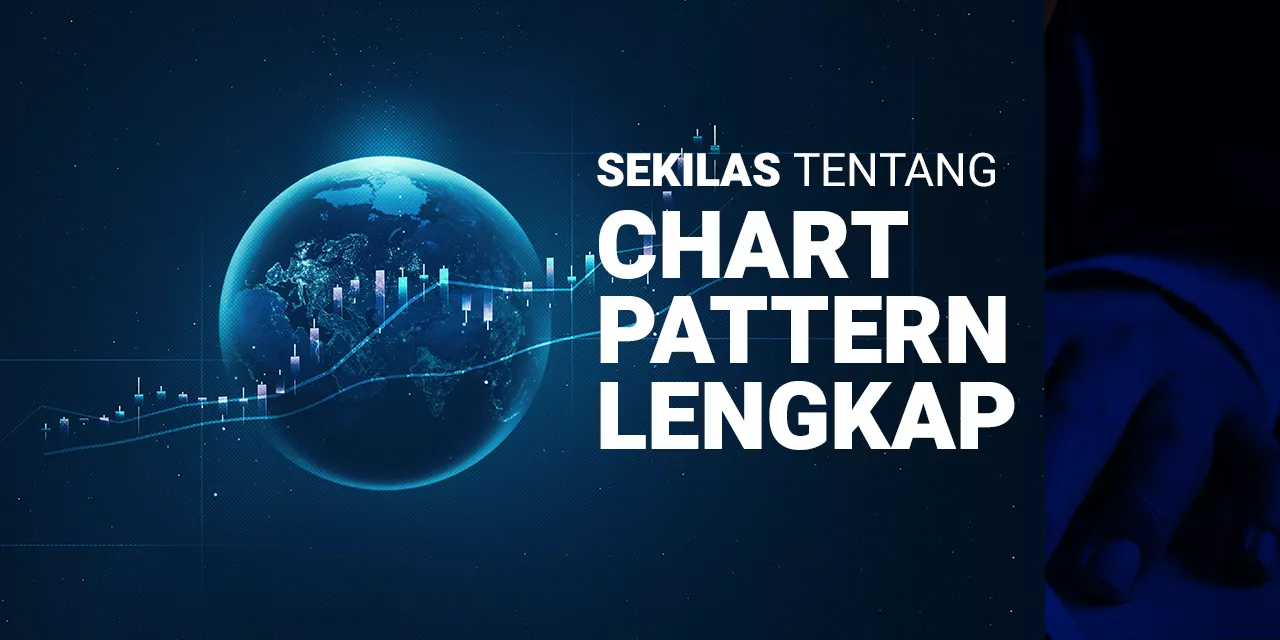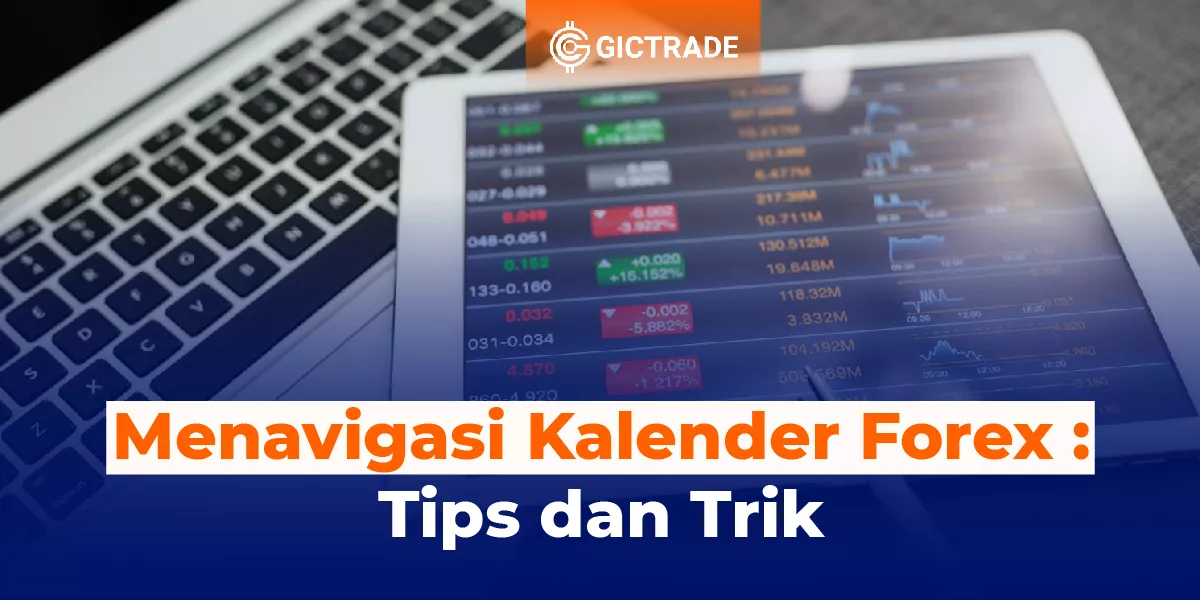If you want to do trading activities, then you must also understand the chart pattern that will be used to read the chart itself. This chart pattern will be used for analysis on markets such as stocks, forex, commodities, and others. For this reason, this time we will learn about the complete chart pattern.
The complete chart pattern will be very useful for you if you study it. Chart patterns will form price movements and signal a major signal, consisting of a trend continuation or reversal.
For more details about this complete pattern chart, you can learn about it through the article below.
However, before learning the complete chart pattern, you can trade with GIC by downloading application of the GICTrade Mobile on the App Store or Play Store.
Table of Contents
Price Patterns in the Complete Chart Pattern Technique
A chart pattern is a form of price movement that will always repeat itself and will signal key signals, such as trend continuation and reversal.
Mastering the chart pattern technique is one of the abilities that can make it easier to process forex trading strategies without using indicators. For this reason, we will learn about the types of charts that will be used.
|
Also read : Complete Forex Trading Pattern Charts, Let's Get to Know It! |
Continuation Pattern

A continuation pattern is a chart pattern that will show signs of a continuation of the price of capital market assets from the previous trend. The shape of this pattern is very good to be able to see signals about a temporary price correction.
In this chart pattern technique, it is possible that the price of the asset will be able to return to the way it was before after there is a temporary correction.
Descending Triangle Pattern

Signals in this pattern tend to experience a continuation of the downtrend. Contrary to the ascending triangle pattern that we will discuss later, this descending triangle will depict a high that continues to fall, and a low that remains stable. In this condition, the buyer's strength will weaken so that the price will immediately enter a bearish trend.
Ascending Triangle Pattern

This ascending triangle will be marked by a shrinking low price, while the high will tend to be stable. This can indicate the strength of the seller but the buyer's position is still strong. It can also be interpreted that the correction of this uptrend will end and the price will continue in a bullish trend.
Bearish Flag Pattern

The signal in this technique will experience a continuation of the downtrend. It has a similar understanding to a bullish flag by means of technical analysis, but this technique will use the decline as a 'pole' and also an upward correction as a 'flag'. This pattern will indicate a signal of a downtrend continuation.
Bullish Flag Pattern

Signals in this technique will tend to experience an uptrend continuation. This chart pattern that resembles a flag will experience a price spike that acts as a 'pole', and also a correction that occurs afterwards functions as a 'flag'.
This technique focuses more on bullish flags, and warns to be more aware of price movements that appear to be declining in the midst of the uptrend itself. If the weakening will begin with significant strengthening, then the middle price will form a bullish flag pattern and its decline will be a temporary correction.
Bullish Pennant Pattern

This bullish pennant pattern will combine elements of the flag pattern and also the triangle. This bullish pennant has a 'pillar' due to the precede of a price strengthening which will then be followed by a correction with a high low pattern that will form a triangle.
Before learning the next discussion about reversal patterns, you can invite your friends or register yourself as an IB to be able to get additional funds in trading.
Reversal Pattern

Reversal pattern is a pattern that hints at a reversal of the direction of the trend. If during an uptrend or downtrend then this pattern has appeared, then it can be predicted that the price will move in the opposite direction of the previous trend.
Inverted Head and Shoulders Pattern

The Inverted Head and Shoulders pattern is one of the patterns of trend reversals that is also the opposite of the usual Head and Shoulders pattern. Usually this pattern will be seen in a downtrend, because they are patterns of trend reversals, so this pattern requires the existence of a previous trend.
Inverted Head and Shoulders or commonly referred to as Inverted Head and Shoulders is the opposite of Head and Shoulders and is formed in a downtrend during a lower low movement followed by a lower high.
Head and Shoulders Pattern

This head and shoulders pattern will usually appear when a stock is experiencing a bull and will be near the end of the uptrend itself. One thing you need to understand is that the height between the first and third peaks is not always exactly the same.
Likewise, troughs are formed as a result of stock movements with head and shoulders patterns that can vary, so it is important to be able to know which neckline is in the pattern listed on the chart.
Double Bottom Pattern

This Double Bottom pattern is a candlestick pattern that will be a signal for investors or traders to be ready to take a long position. In this pattern, the stock price will experience a decline and will stop at one point before it can experience a reversal.
After the reversal occurs, the stock will stop at the price point that is approaching the lowest point of the previous valley, before it can be pulled up again and there will be a continuous price increase and will break through the neckline.
Triple Bottom Pattern

This triple bottom pattern is the opposite of triple tops which will indicate a trend reversal heading towards the bulls. This will often mark the end of a downtrend and the beginning of an uptrend.
This pattern consists of three valleys at approximately the same low depth, with two peaks as a clear separator between the three valleys.
Double Top Pattern

Double Top is a candlestick pattern that will signal the time to enter a bearish position after a bullish trend. This Double Top will be depicted with a pattern that will resemble the letter M.
This Double Top consists of two peaks with the second peak unable to cross a resistance limit. In this Double Top pattern, this sell position can be taken at the time of the second peak that occurs or at the highest swing after the second peak as a form of stop loss or cut loss.
Triple Top Pattern

The triple top pattern is a pattern of downtrend reversals that will often mark the end of an uptrend and the beginning of a downtrend. The characteristic of this pattern itself consists of three successive peaks that will reach a level of resistance at a high value that will be more or less the same, with the two valleys as a clear separator between the three peaks.
Bilateral Chart Pattern

This type of chart will be more complicated because the price signal can move in both directions so it can be referred to as a bilateral signal. To play this type of chart pattern, you should consider two scenarios (both upside and downside breakouts) and you can place one order at the top of the formation and the other at the bottom of the formation.
CLAIM YOUR BONUS NOW!
Contact our CS immediately to get: Magic Indicators, Premium Signals and many more just click here
If one of the orders starts to be threatened, then you can cancel the other order. You also need to be careful of false breaks if you set an entry order too close to the formation of a top or bottom.
Descending Chart Pattern
The Descending Triangle is a bearish chart pattern that can be used in technical analysis by drawing a single trend line that will connect a series of lower highs and also a second horizontal trendline that also connects a series of lows.
Often, traders will notice a move below the lower support trend line as this will indicate that momentum from the decline is building and for a breakout to be imminent.
After the breakdown occurs, the trader enters a short position and aggressively helps push the asset's price even lower.
Ascending Chart Pattern
The ascending triangle is a chart pattern that will be used in technical analysis. This is created by a price movement that allows horizontal lines to be drawn along swing highs as well as uptrend along swing lows. The two lines will form a triangle. Traders will often notice breakouts of such triangle patterns. This breakout can occur upwards or downwards.
This ascending triangle is often referred to as an extension pattern because it is usually the price that will break in the same direction as a trend that occurred shortly before the triangle was formed. This ascending triangle can be traded because it will provide a clear entry point, profit target, and also a stop-loss level.
Symmetrical Chart Pattern
The Symmetrical Triangle is a pattern formed from the continuation of the previous trend. This pattern will generally be considered part of a consolidation period, i.e. before the price will resume an uptrend that can be identified by the formation of a (bullish) trendline.
You can easily recognize this Symmetrical Triangle because it has a distinctive shape and will show a high price that continues to decrease, while for the low the price will continue to increase.
After knowing and understanding the types of complete chart patterns, you can fill out the Preliminary Test to be able to measure how far your trading talent is when doing it in real-time.
How to Recognize Patterns in a Complete Pattern Chart
Here are ways you can do to be able to nail patterns in charts when trading. These methods are:Understanding What Stock Technical Analysis Is
One of the keys to success when investing through capital market assets, especially in stock instruments, is the strategy in making decisions. In the world of the capital market, there are two types of important analysis that you must know and must learn, namely Fundamental Analysis and Technical Analysis.
This Fundamental Analysis will refer to the financial condition of the company, the general economy, and the related industry. While this stock Technical Analysis has been defined as an analysis that will refer to data from historical stock prices.
This method can be done to predict a price movement in an issuer (a company listed on the Indonesia Stock Exchange) in the stock market.
This price movement prediction can be read by looking at a price movement chart based on its history. That way, investors can make decisions whether they will buy, sell, or hold their stock investment assets.
Getting to Know Patterns in Stock Technical Analysis
In general, there are two ways you can use to recognize a chart pattern, namely manual and automatic. This manual method is done by observing the chart and drawing lines on a price movement that will form an important pattern. The object of this analysis includes vertical lines, horizontal lines, and trendlines.
Don't forget to also pay attention to the existing fundamental factors. Before continuing with the last discussion, you can consult with GIC about the trades you do through the Trader Assessment that has been provided by the GIC team itself.
This candlestick also represents the impact of investor sentiment on stock prices. This kind of analysis will be useful for investors to be able to determine the right time when trading. This method will help to analyze a number of financial assets, such as cryptocurrencies, forex, and stocks.
However, this Chart Pattern is still simple because you don't need to use anything other than the price chart itself.
After knowing about chart patterns along with the types and all the questions that are often asked by traders, both beginners and professionals, then you can understand each type through the explanation that has been explained above.
Based on the existing explanation, you can compare it with the chart pattern in real time or you can first look for examples of cases that have existed.
In addition, you can also apply the ways to recognize the complete chart pattern that has been described above. Likewise with how to use it. You can also fill out an internal survey so that we can also find out about feedback from the article and from the GIC platform itself.
How to Use the Complete Chart Pattern in Trading
When you want to use the chart pattern, of course first make sure you have understood all the types of chart patterns that have been described above. In addition, you have to consider the advantages and disadvantages of the Chart Pattern above, technical analysis using this subjective technique may be suitable for you, if you realize that the trading signal is still at risk of failing.That is, you understand that no signal can guarantee 100% success. In this case, you need to apply a money management to be able to control the risk of failure, so that the total profit is greater than the accumulated loss.
In addition, you also have to prioritize speed and flexibility. The process of identifying Chart Patterns can be done quickly on a group of currencies to be able to find the best trading opportunities. Free on any timeframe.
Benefits of Trading Using Chart Patterns
With technical analysis of chart patterns, you can apply trading strategies in an easier way. You should use reversal patterns as complementary/confirmation signals and also forwarding patterns as setups of trading strategies.
This is because it is better to be able to trade with the concept of "follow the trend" so that the risk of trading losses that you do is small.
For entry, it should be done after the pattern has been formed, so that the signal to be obtained is more valid. Various important levels on the chart pattern can also be used as a reference as a stop loss and also take profit point.
If traders have successfully understood this theory of analysis, then it will be easier to understand a market condition and will interpret it as a trading opportunity.
Chart pattern analysis is also able to provide a leading signal because it appears at the beginning and will mark important movements that exist, both reversals and forwards.
This analysis is an analysis technique that can stand on its own without using complicated indicators. However, it will be much better if you also use several indicators as confirmation so that the potential for success of your analysis is even greater.
Don't forget to also pay attention to the existing fundamental factors. Before continuing with the last discussion, you can consult with GIC about the trades you do through the Trader Assessment that has been provided by the GIC team itself.
FAQs About Complete Chart Patterns
The explanation above may still be less understood by traders, for that reason we have summarized some of the questions that are often asked by traders about the chart pattern itself.Name 19 Types of Complete Forex Chart Patterns!
Here are the types of forex pattern charts that exist and are mentioned in full. These types are:- Reversal Chart Pattern
- Double Top dan Double Down Bottom
- Triple Bottom
- The Head And Shoulders Pattern
- 1. Head and shoulder
- 2. Inverted head and shoulder
- Wedge Pattern
- a. Falling wedge
- b. Rising wedge
- Continuation Chart Pattern
- Flag pattern
- a. Bullish Flag pattern
- b. Bearish Flag pattern
- Pennant Pattern
- a. Bullish pennant
- b. Bearish pennant
- Wedge Pattern
- a. Bullish wedge
- b. Bearish wedge
- Rectangle Pattern
- a. Bullish rectangle
- b. Bearish rectangle
- Flag pattern
- Bilateral Chart Pattern
- Symertical Pattern
- Ascending triangle
- Descending Triangle
What is a Candlestick Chart Pattern?
Candlestick pattern is an ancient Japanese charting method used to improve the accuracy of calculations. This method will reflect the impact of investor sentiment on the existing price.
This analysis is also commonly done to be able to determine when the right time to be able to enter and exit during trading.
The use of candlestick charts is included in the category of discretionary methods. Which means, this candlestick uses subjective intuition. There are various kinds of patterns that can be analyzed on the chart that can later be solved in actual trading.
These candlesticks can generate stable profits if traders have qualified flying hours.
What is Chart Pattern Reversal?
This price pattern will give a signal that the price has a high probability of reversing from the previous main trend. This means that price patterns in these categories can provide early signals about when you can sell at the highest price point or buy at the lowest price level.
Generally, a chart pattern that will indicate this reversal will appear at the top or bottom of the price. This pattern will identify that the price trend is no longer able to strengthen/decrease, so that when the pattern has been formed, the price will reverse by forming a new trend.
How is Chart Pattern in Crypto?
Traders will tend to focus too much on when is the right time to enter crypto trading in the market, but very few will be able to focus on developing strategies to be profitable.
Not a few traders are also worried about selling their crypto because they are afraid that the price will rise after they sell so that there will be little to make a profit.
Then the price of the crypto can drop very drastically and often traders sell their assets at a loss. Because of this, it is important for traders to be able to identify and take profits as soon as the trend has started to reverse.
Usually traders will take a little sell at least about 50-75% of their crypto assets in case the price of the crypto will rise, so that they can still get results.
How is a Chart Pattern in Stocks?
Not much different from crypto and forex, the chart pattern used will also be the same as the types above. The only difference lies in the instrument to be used, namely stocks. Therefore, it is also important for you to understand the technical analysis of the stock itself and recognize the patterns in the analysis.What is a Chart Pattern based on Astronacci?
According to Astronacci, Chart Pattern is the most accurate and simple technique for reading market price movements. The accuracy will be higher than traditional candlestick patterns, as it takes into account more candlestick formations.However, this Chart Pattern is still simple because you don't need to use anything other than the price chart itself.
After knowing about chart patterns along with the types and all the questions that are often asked by traders, both beginners and professionals, then you can understand each type through the explanation that has been explained above.
Based on the existing explanation, you can compare it with the chart pattern in real time or you can first look for examples of cases that have existed.
In addition, you can also apply the ways to recognize the complete chart pattern that has been described above. Likewise with how to use it. You can also fill out an internal survey so that we can also find out about feedback from the article and from the GIC platform itself.
 Last:
Last: 







